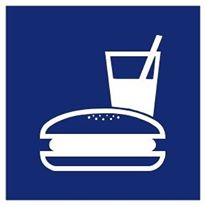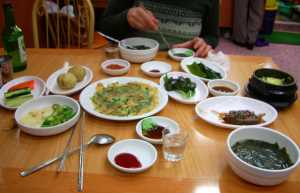Healthy Eating in the Fast Lane
 The term “fast food” has become synonymous with “franchises” and “unhealthy eating”.
The term “fast food” has become synonymous with “franchises” and “unhealthy eating”.
However, recent developments in the restaurant industry may require a shift in thinking as healthier menu choices become the rule rather than the exception.
Pressures from the “Baby Boomers” searching for immortality (well longer healthier lives at least) by making healthier choices has forced all restaurants to upgrade their menus to include more items to meet this demand.
Dr. Ken Dychtwald, author of the “Age Wave” and “Age Power”, writes and speaks of the “new-old” are transforming health and medicine in the 21st century. “Boomers didn’t just eat food – they transformed the snack, restaurant and supermarket business” stated Dychtwald.
These transformations have significant implications on food choices and ultimately long term health. This is the generation that spawned and supported the fast food, the convenience store, the “drive through”, the TV Dinner and the Golf Cart industries. Now the very industry spawned by this generation is scrambling to keep their loyal customers. So we see more menu items offering reduced carbohydrate, reduced fat, higher protein, and more options to choose from.
A second competitive factor in the mix has been the rapid rise in healthy ethnic restaurant choices. These particularly include the authentic Mexican, Thai, Vietnamese, Korean and Japanese offerings.
 This oriental influence has seen lighter fare, more vegetables, good protein choices and fast service. The North American perception of oriental dining has assumed a rice and noodle base, but a careful look will reveal a protein adequate, responsible carbohydrate and low fat fare. They all offer many colorful vegetables, fresh sprouts, rice and vermicelli noodles and flexibility when it comes to adding or subtracting food items.
This oriental influence has seen lighter fare, more vegetables, good protein choices and fast service. The North American perception of oriental dining has assumed a rice and noodle base, but a careful look will reveal a protein adequate, responsible carbohydrate and low fat fare. They all offer many colorful vegetables, fresh sprouts, rice and vermicelli noodles and flexibility when it comes to adding or subtracting food items.
Speaking of flexibility, there has also been a significant attitude change in all restaurants as they try to accommodate the desires of the 10 million baby boomers who are in their early fifties. Not long ago it was awkward to ask for even a small change in a menu item.
Little changes like “no msg please” or “no potatoes”, or “can I have extra chicken with that”, or “salad dressing on the side please” were seen as an imposition on the waiter or cook.
However that has all changed now. If you wish to increase the protein and reduce the carbohydrate content of any menu item you only need to specify what it is that you would like.
Here are some common suggestions that apply to all restaurant situations – even the franchises fast food and your favorite ethnic establishments.
- Ask the price for doubling the chicken (beef, shrimp, etc) particularly if your desirable weight is over 175 pounds (80 kg).
- Request a small cheese plate as an appetizer before you start drinking your wine or beer.
- Request a couple of Italian sausages be added to the sauce of your tortellini
- Choose a whole wheat (sprouted wheat is even better) wrap over bread or buns in a sandwich.
- Double the meat in a Quesidia or Fajita
- Choose thin crust for pizza and add extra protein to the topping.
- When ordering a stir-fry request extra colorful vegetables and no rice (pasta or potato) and maybe extra meat.
- Choose protein appetizers.
- Request sauces and dressings on the side so you stay in control.
To demonstrate that it is very possible to eat healthy in fast food franchise restaurants I have compiled 12 healthier choices from 6 different franchises. These are not the only good choices, they are merely choices.
This information is available on each company website (be sure to look for the “Canadian” site). Naturally you will find similar choices available at non franchise outlets who don’t happen to have the resources to maintain such a site nor the ability to have every menu item analyzed.
The criteria for healthier eating is based on the premise that a modest reduction in carbohydrate intake has health benefits as does a modest reduction in fat consumption.
In general the protein to carbohydrate ratio should be greater than 0.65 and ideally the fat grams should be about ½ the protein grams.
However, because fat is insulin neutral, ensuring “modest” fat grams will not be a health hazard. (Calories do count).
Never “super-size” a meal in a fast food restaurant. Super-size basically means and extra dose of flavored sugar water (known as soda pop or liquid candy) and extra fries laden with trans fats and acrylomides (if this is an unfamiliar term – type it into your favorite search engine and get ready for and eye full).
| Menu Item
|
Calories
|
Protein gm
|
Carb gm
|
Fat gm
|
Fibre gm
|
| Turkey Breast Wrap – Subway
|
180 |
22 |
18 |
6 |
9 |
| Classic Club Salad - Subway
|
380 |
35 |
13 |
20 * |
4 |
| Grilled Chicken Salad – Burger King
|
190 |
25 |
9 |
7 |
1 |
| Junior Roast Beef Sandwich – Arby’s
|
230 |
15 |
24 |
8 |
1 |
| Regular Roast Beef Sandwich – Arby’s
|
330 |
21 |
32 |
13 |
1 |
| Martha’s Vineyard Salad (Chicken) – Arby’s
|
250 |
26 |
8 |
23 * |
4 |
| Ultimate Chicken Grill Sandwich – Wendy’s
|
350 |
29 |
44 |
7 |
2 |
| Mandarin Chicken Salad (½ pk dressing) – Wendy’s
|
295 |
24 |
27 |
11 |
4 |
| Bacon Ranch Salad – McDonald’s
|
250 |
31 |
12 |
9 |
3 |
| Chicken Oriental salad – McDonald’s
|
270 |
20 |
9 |
10 |
3 |
| Chicken Protein Platter – McDonald’s
|
210 |
28 |
6 |
6 |
1 |
| Grilled Chicken Salad – DQ
|
210 |
25 |
8 |
8 |
2 |
* a little high in fat !!
LeanSeekers
https://leanseekers.com/Articles/Health-Wellness/Healthy-Eating